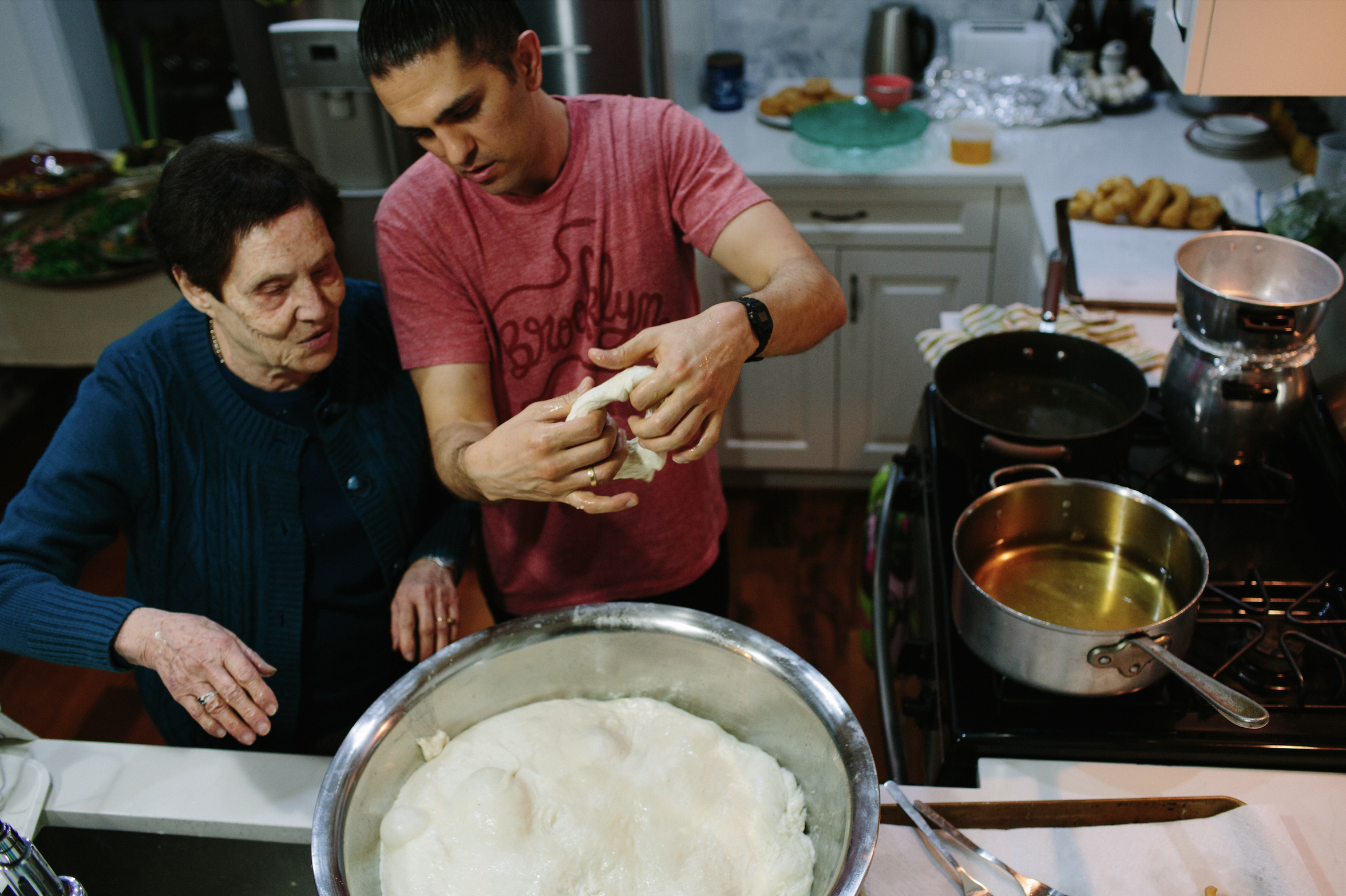On Thursday, 12/22, we hosted a very special Sfenj Masterclass. Ron and our special guest had a wonderful time making the Moroccan doughnuts and sharing our family recipe with you.
View the class recording here
WHAT ARE SFENJ?
Imagine a doughnut. Now imagine a doughnut that is supremely airy and light, yet chewy (but in a good way) with craggy, textured edges and a crisp, golden exterior. Now you have something more than any old doughnut - you have sfenj.
Sfenj are ring-shaped doughnuts that are popular across Morocco, Algeria, and Libya. (Tunisians also enjoy a closely-related fritter called yoyo.) Like other doughnuts, sfenj are made with a yeast-raised dough. But while European and American-style doughnuts are often enriched with eggs, butter, or milk, sfenj are traditionally made with a simple mix of flour, yeast, and water, plus a little sugar and salt.
The dough has a relatively high hydration, which makes it too loose to form doughnuts and let them rest. Instead, sfenj are formed and fried quickly. Ron describes it this way: “You prepare the dough in bulk, then tear off a piece, poke a hole in the middle and stretch it into the doughnut shape, and immediately drop it in the hot oil.” The resulting fritters are more rusticly shaped than other doughnuts, but they are also noticeably lighter.
SFENJ, SFINJ, SFINGE- WHAT’S IN A NAME
The name sfenj originally comes from the Arabic word isfenj, which translates to “sponge.” It refers to the way the fritters soak up oil while they fry, and also to the doughnut’s bouncy texture. (Anyone familiar with Sicilian cuisine has likely also heard of sfince di San Giuseppe - fried pastries filled with sweetened ricotta and candied fruits, and traditionally served on St. Joseph’s Day. The name comes from the same root as sfenj, and hints to the influence Arabic cuisine had on both North Africa and Southern Italy.)
Like many dishes that have names translated from another language into English, there is no official consensus on how to spell sfenj. From sfenj to sfinj to sfinge, any of these is technically correct, though we see sfenj used most often across cookbooks and food websites.
HOW TO SERVE SFENJ
All fried pastries are at their flavor peak when served fresh and crackling from the pan, and sfenj are no exception. The hot doughnuts are served one of three ways. Some people prefer them plain, without any adornment or sweetness aside from the hint of sugar in the dough. Others like them coated in sugar, with the crunchy-sweet granules clinging to the just-fried rings. Still others prefer them served in the Middle Eastern manner - drizzled or dipped in simple syrup. At New York Shuk, we like to give our sfenj a little flavor upgrade by adding Kafe Hawaij, Ras El Hanout, cardamom & saffron, orange blossom or rose water to the sugar or syrup (sometimes we even sneak it into the dough).
SFENJ IN MOROCCAN CULTURE
In Morocco, sfenj are considered an everyday breakfast pastry or street food snack, and are often eaten alongside glasses of strong coffee or mint tea. They are sold in souks, bakeries, and cafes across Morocco, where professional bakers hang the fried rings on string or strips of palm.
Moroccan Jews helped introduce sfenj to Israel in the 1950s. Ron recalls being told about sfenj sellers who, in the country’s early years, would walk through neighborhoods in the mornings and afternoons. As he said, “If you lived in an apartment building, the seller would put the sfenj on a stick with a little basket and lift it up to your window so you could take the doughnuts and put money in the basket.” The practice has mostly died out and today, most sfenj eaten in Israel are made at home.
SFENJ ON HANUKKAH
For Moroccan Jews, sfenj takes on additional significance during the winter months. Like Jewish communities around the globe, Moroccan Jews traditionally eat foods fried in oil during Hanukkah. The holiday commemorates the rededication of the Temple in Jerusalem following the Maccabees’ victory over the ancient Greeks. Upon returning to the Temple, the Maccabees only found enough olive oil to light the menorah for one night - but miraculously, it lasted for eight days and nights.To celebrate this “miracle of oil,” Jews make and eat fried foods - and for Moroccans, the celebration almost always includes sfenj.
Pro tip: serve mint tea when making and serving your sfenj
Brooklyn, NY 2014.
Ron is teaching Leetal’s grandma the secret for the perfect sfenj
SFENJ IN THE
NEW YORK SHUK FAMILY
Ron has been eating sfenj his whole life. As a child in Israel, his Moroccan grandmother made them every Hanukkah, frying endless rounds of the spongy batter in her kitchen in Beersheva. She also made them at picnics. “My family’s picnics were not what you think of today - a few cheeses, breads, and specialty foods you pick up at the store” he said. “We would go out to the forest with a big group in several cars. The dads would grill and the grandmothers and mothers would cook elaborate meals while the kids played under the trees.” A day of playing tag followed by freshly fried sfenj - sounds dreamy, right?
After years of enjoying his grandmother’s sfenj, Ron learned how to make them in his 20s - first by watching his mother fry them, and eventually by lending a hand. These days, sfenj are a part of our family’s annual Hanukkah celebration, and we hope you are inspired to make them too!
Ron’s grandmother, mami, making sfenj in a family picnic
Ron’s grandparents making sfenj in their house in Beer Sheva, Israel















